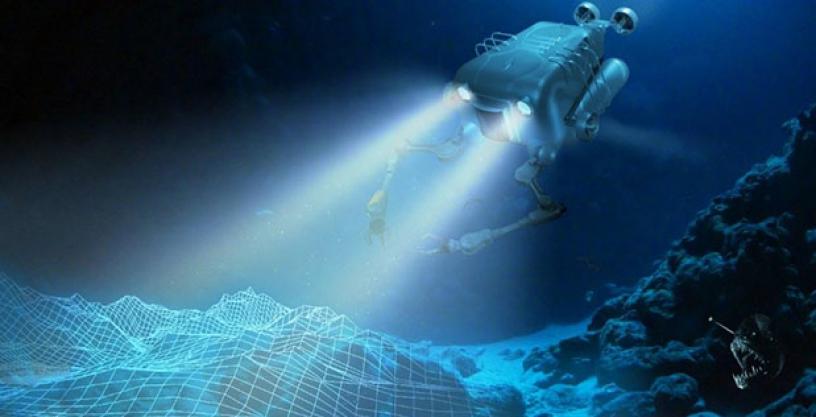
Six companies will work toward robotic solutions to navigate ocean depths, manipulate objects on sea floor
Nov 14, 2019
DARPA has awarded six contracts for work on the Angler program, which aims to pioneer the next generation of autonomous underwater robotic systems capable of physical intervention in the deep ocean environment. This class of future unmanned underwater vehicles (UUVs) must overcome reliance on GPS and human intervention to support infrastructure establishment, maintenance, and resilience over the vastness of the ocean. The Angler program seeks to merge breakthroughs in terrestrial and space robotics, as well as underwater sensing, to develop autonomous robotic solutions capable of navigating and surveying ocean depths, and physically manipulating human-made objects of interest.
Three companies will perform in Track A, focused on developing an integrated solution for all challenges in the Angler technology and operational areas:
- Leidos
- Northrop Grumman Systems Corporation
- L3Harris Technologies
Three companies will perform in Track B, focused on developing solutions specific to the fields of navigation, autonomy, and perception:
- SoarTech
- EdgeTech
- Kitware
The Angler program envisions numerous benefits, including:
- Establishing functionality for long-duration mission navigation and autonomy deprived of GPS and surface-based communication;
- Providing a first-of-its-kind long-distance undersea manipulation platform capable of fully autonomous operation; and
- Advancing perception systems to enable grasping underwater objects in degraded undersea environments.
The program is targeting three phases of development, culminating with a fully integrated prototype completing an underwater mission in a dynamic, open ocean environment.
Image Caption: Artist’s concept of Angler
# # #
Media with inquiries should contact DARPA Public Affairs at outreach@darpa.mil
Associated images posted on www.darpa.mil and video posted at www.youtube.com/darpatv may be reused according to the terms of the DARPA User Agreement, available here: http://go.usa.gov/cuTXR.
Tweet @darpa
